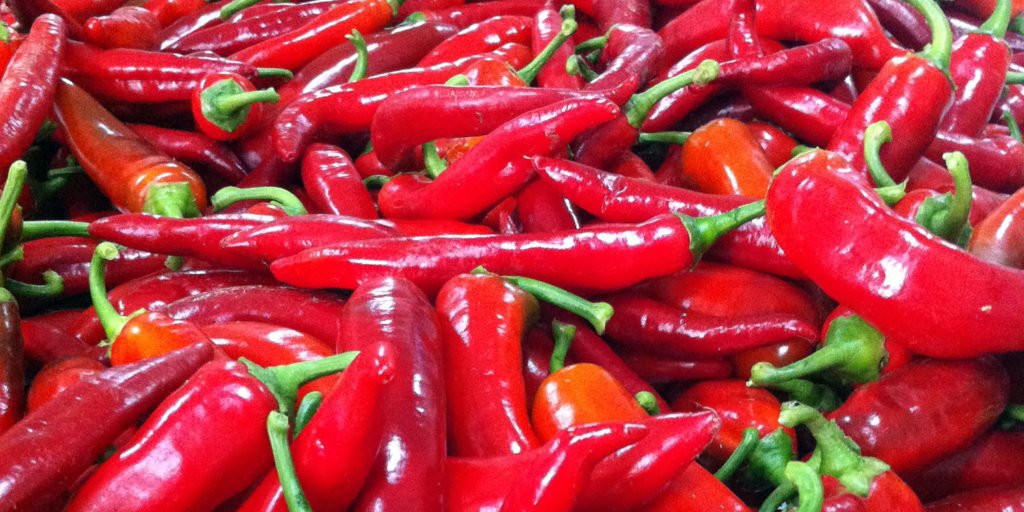Capsaicin
The hot ingredient of chilli
Capsaicin is contained in various species of the genus Capsicum, e.g. in chilli. Capsaicin is only found in the pith of a chilli pod, not in the seeds. When chillies are eaten, capsaicin irritates the ends of heat nerves in the mouth, especially those on the tongue. These nerve endings then release a messenger substance (neurotransmitter) that leads to a widening of the blood vessels and better blood circulation. The burning sensation in the mouth is perceived by the brain as pain, which in turn leads to the release of endorphins (“happy hormones”). The hotness of chillies is measured in so-called Scoville units and can vary greatly between different varieties; from barely hot to extremely hot. Capsaicin is very resistant to heat (cooking) and cold (freezing)
Positive effects in the body
Capsaicin has several positive effects in the body that can be used. For example, it stimulates the production of mucus in the stomach lining, so that the mucus layer becomes thicker and the stomach is better protected from the stomach acid necessary for digestion. In some cases, this can replace so-called stomach acid blockers, which have many side effects! Read a study on this. Capsaicin and other substances contained in chilli also stimulate the production of the body’s own cortisol, which can have a very positive effect, especially if cortisol levels are low. As already mentioned, capsaicin leads to better blood circulation and thus supports the cardiovascular system.

Capsaicin, the fiery ingredient in chillies, not only heats up the palate, but also the pain. More and more studies attest the alkaloid a very good effectiveness in the fight against nerve pain caused by injuries or diseases of pain-conducting fibres.